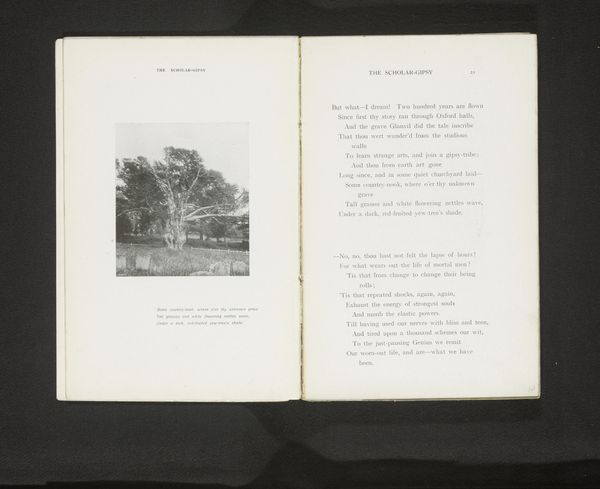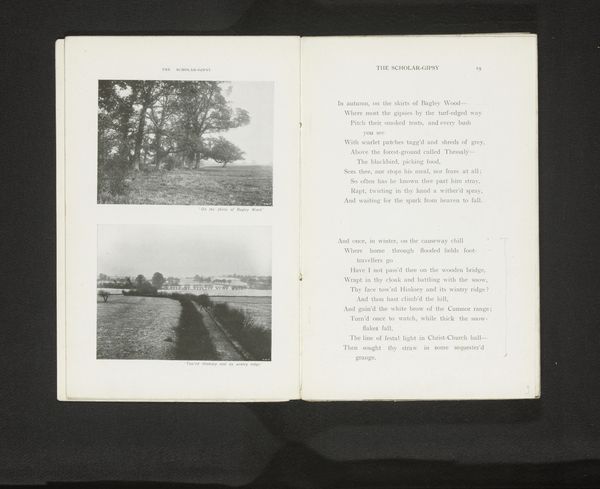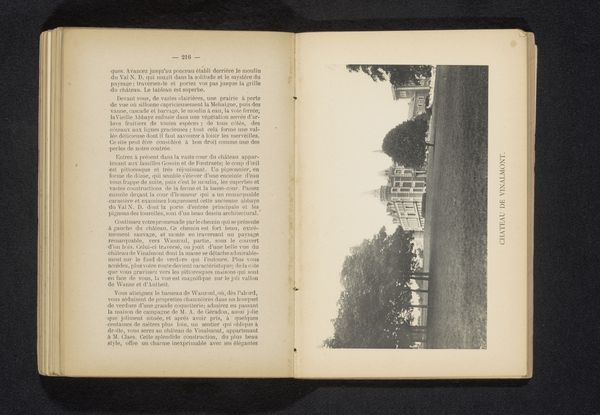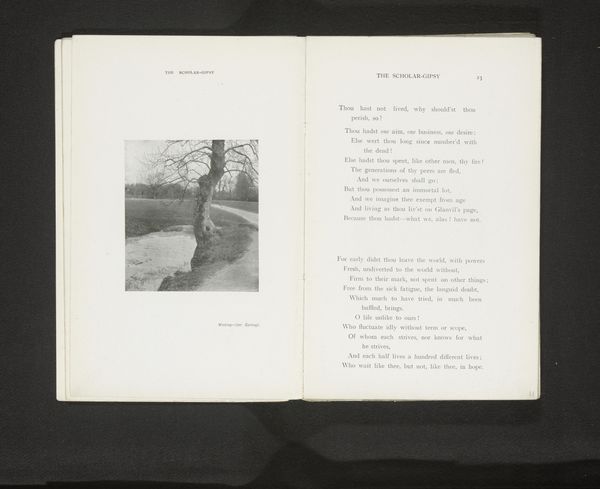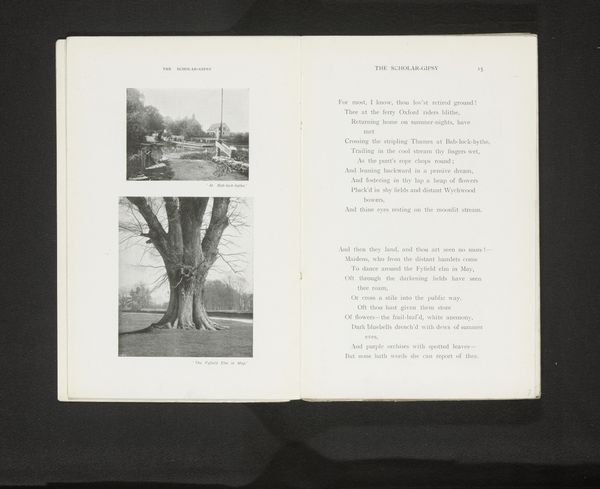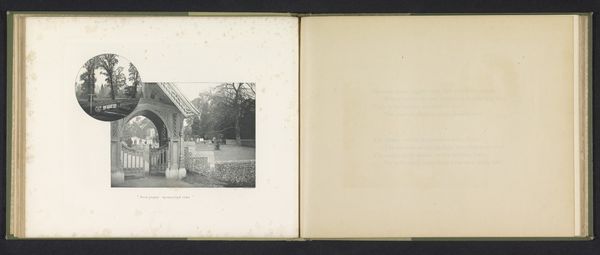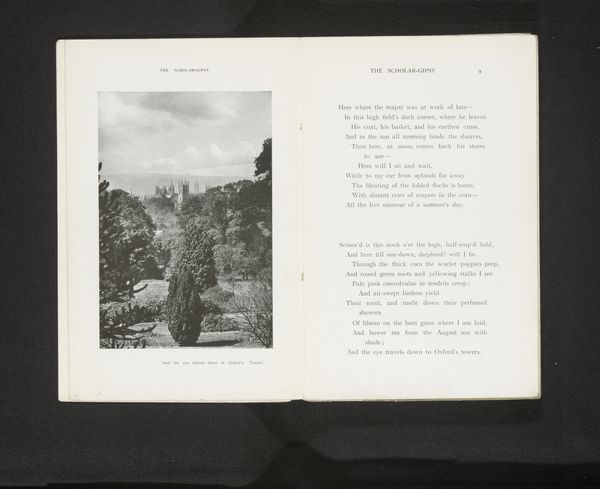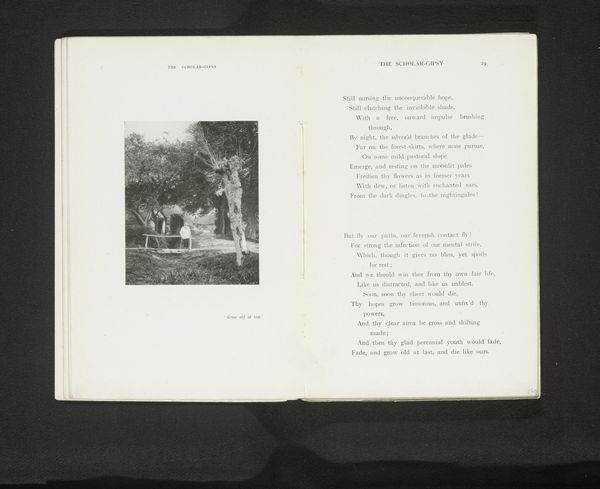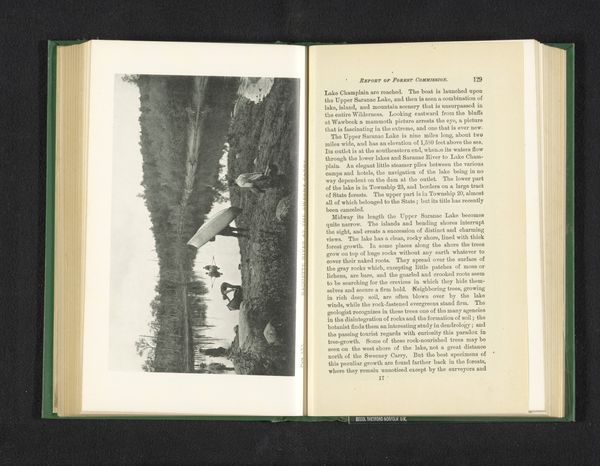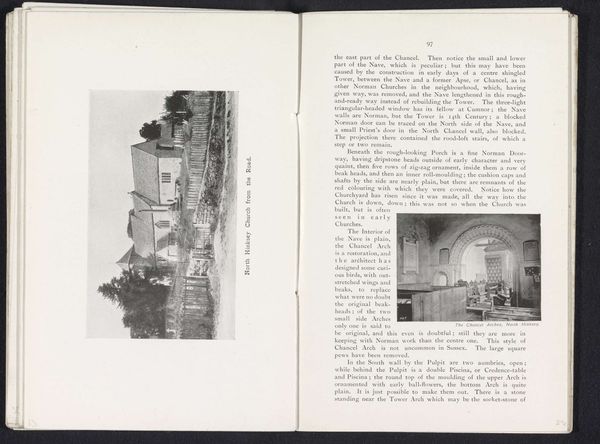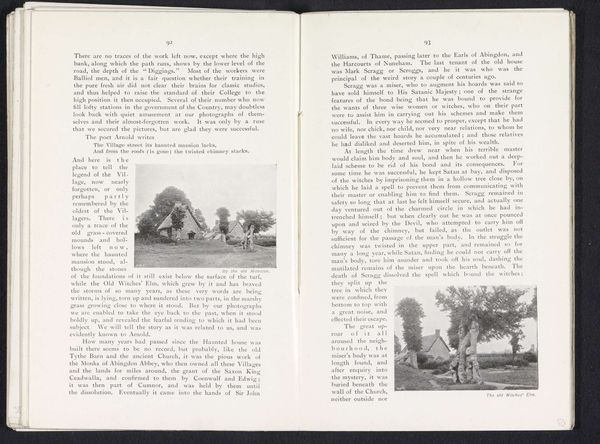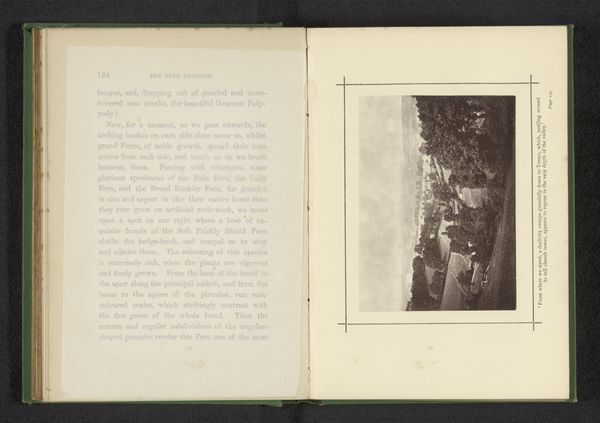
photography, gelatin-silver-print
#
portrait
#
landscape
#
river
#
photography
#
gelatin-silver-print
Dimensions: height 223 mm, width 143 mm
Copyright: Rijks Museum: Open Domain
Curator: This is an albumen silver print from before 1912 by Henry W. Taunt. It features two images, one above the other, alongside text from Matthew Arnold's poem "The Scholar-Gipsy." The upper image depicts a river landscape, and the lower image shows a woman standing in a doorway covered in foliage. Editor: Immediately, I’m struck by the woman at the doorway. There’s something so contained and enigmatic about her; her positioning emphasizes themes of domesticity, and, perhaps, constraint within those environments. But the choice of a photographic process of this period complicates assumptions about access and privilege inherent in depictions of such quiet lives. Curator: Exactly, this image calls out for analysis that blends attention to craft with nuanced sociohistorical understanding. Taunt operated a successful photographic business. Analyzing photographic prints requires consideration of labor—the studio work, the darkroom processes, the material inputs. We can read it as a cultural commodity made and consumed during a particular historical moment. Editor: And the decision to pair these photographs with Arnold's poem adds another layer. "The Scholar-Gipsy" idealizes a romantic connection to nature, free from social constraints. By placing the woman within this frame, are we romanticizing her rural existence? Or does it critique Victorian expectations and assumptions about the woman's role within that landscape? The two photos feel at odds in an intriguing way, opening more questions than answers. Curator: Considering the materials—the paper, the silver—helps further situate the image within circuits of capital and artistic production. We need to think about the gelatin silver process, access to darkrooms, printing presses. These details ground us in the labor required to produce this image and bring into clearer focus the ways class and gender shape both image-making and the subjects it presents. Editor: The social contexts here are especially fascinating to dissect. Considering how photography participated in constructing notions of gender and rural identity—and how the proliferation of images like these further ingrained such narratives—opens some much-needed critical perspectives, prompting new reflections of class dynamics. Curator: Right. By centering materiality and production alongside a more theoretically engaged, socially-attuned critical framework, we start to reveal the layered complexity behind this outwardly picturesque piece. Editor: It makes one rethink our own contemporary position in image consumption, especially as regards notions of nostalgia. It invites us to consider what is lost, what is idealized—and at what cost.
Comments
No comments
Be the first to comment and join the conversation on the ultimate creative platform.
